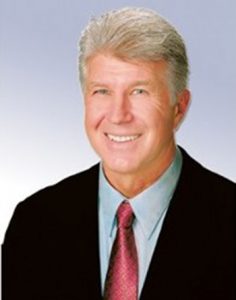Guest Blog: How senior citizens can cope with diabetes
Diabetes is a condition that affects how the body uses glucose (sugar), the main source of energy. People with diabetes either do not produce enough insulin (Type 1), or their body does not respond properly to insulin (Type 2). The most common types of diabetes are Type 2 and gestational diabetes, which affects women during pregnancy.
As you age, your body does not respond as well to diabetes medicine. You may find that your blood sugar is harder to control. Sometimes low blood sugar is a problem too because seniors tend to be less active than younger people so they don’t use up all their stored glucose or “sugar.” If you have trouble eating or drinking because of illness or other problems, ask your doctor if you should use a pump with insulin or pills instead of shots every day.”
As you age, your body does not respond as well to diabetes medicine.
As you age, your body does not respond as well to diabetes medicine. There are several reasons for this. The most common is that your kidneys are less efficient at processing the medicine, which can result in higher blood sugar levels than intended.
Another reason could be that there is a change in how well your liver processes the medication. In some cases, it may be necessary to adjust how often or how much you take each day in order for it to work effectively and keep your blood sugar under control.
You may find that your blood sugar is harder to control.
As you age, it’s likely that your body will respond less effectively to insulin. This means that your blood sugar may be harder to control.
You might also find that it’s more difficult for you to recognize the symptoms of low or high blood sugar (hypoglycemia). If these symptoms aren’t treated quickly enough, they could lead to serious complications such as seizures or even death.
If these things happen often enough, or if they cause a lot of discomfort or pain in addition to affecting how well your body works overall (for example: feeling confused), then it might be time for an adjustment in medication or weight loss plan for diabetes so that everything runs smoothly again!
Sometimes low blood sugar is a problem.
Low blood sugar (hypoglycemia) is a problem that can occur if you have diabetes. It happens when your body doesn’t have enough sugar to meet its needs, so it sends signals to your brain that you need more of it.
These symptoms may occur:
- Sweating or shakiness
- Dizziness, weakness and fatigue
If you feel these symptoms, eat something sweet like juice or candy right away! It’s important not to ignore these warning signs because they could lead to unconsciousness if ignored for too long.
If you have trouble eating or drinking because of illness or other problems, ask your doctor if you should use a pump with insulin or pills.
If you have trouble eating or drinking because of illness or other problems, ask your doctor if you should use a pump with insulin or pills.
If you are having trouble eating or drinking because of illness or other problems, ask your doctor if you should use a pump with insulin or pills.
Take your diabetes medications as prescribed.
It’s important to take your diabetes medications as prescribed. If you don’t, it can be dangerous for several reasons:
- Your blood sugar could go up or down, which can make you feel sick and tired.
- You might get infections because of poor circulation caused by high or low blood sugar levels.
- If a diabetic gets sick with an illness such as the flu or pneumonia, it may be harder for them to recover because their immune system isn’t working properly due to high or low blood sugar levels that aren’t being properly controlled by medication (or lack thereof).
Eat a healthy diet.
You should also eat a healthy diet. Your doctor can tell you what types of food are best for your diabetes.
- Eat plenty of vegetables, fruits, whole grains and beans. These foods are low in fat and sugar and high in fiber, which helps keep you full longer so that it’s easier to control how much food you eat at each mealtime. They also contain important vitamins and minerals that help control blood sugar levels in the body. Examples include:
- Fruit such as apples or oranges; vegetables such as carrots or broccoli; whole grains such as whole wheat breads/cereals (not white bread), oatmeal (not instant packets), brown rice
Work with your doctor to make exercise a regular part of your routine.
Exercise is important for senior citizens, who are more likely to have heart disease or diabetes than younger people. Exercise can lower blood sugar levels and help you live longer.
If you have diabetes, your doctor will recommend that you exercise at least 3 times per week for 30 minutes or more each time. Try to exercise at the same time every day so that it becomes part of your routine–for example, before breakfast or after dinner every evening (or both).
Exercise can be a social activity that brings people together in ways other than just talking about their health problems!
Get tested for high blood sugar if you are experiencing symptoms, such as fatigue and frequent urination.
- Symptoms of high blood sugar
- How to test for high blood sugar
- Frequency of testing
If you are experiencing any of the following symptoms, get tested for high blood sugar:
- Fatigue and frequent urination are common signs of diabetes. If you have these symptoms, talk to your doctor about getting tested for diabetes.
If you have questions about your diabetes or treatment, talk with your doctor or pharmacist.
- Don’t be afraid to ask questions. If you are unsure about your diabetes or treatment, talk with your doctor or pharmacist.
- Don’t be afraid to discuss symptoms with family members and friends. They may be able to help you recognize early signs of problems that could lead to a serious illness or injury if left untreated.
- Ask for a copy of the results from all tests done during your visit so that they can be reviewed at home by someone who knows how they should look (e.g., doctor).
Senior citizens living with diabetes can lead productive lives if they manage their health properly.
The good news is that there are many ways to manage diabetes as you age, and these strategies can make it easier for seniors to live a full life.
Many seniors find that using insulin pumps or other forms of continuous infusion provides better control than multiple daily injections. Others may benefit from new devices such as closed-loop systems that automatically adjust dosing based on the glucose level in their blood at any given time. These technologies can help prevent dangerous fluctuations in blood sugar levels while also reducing stress on joints and muscles caused by frequent needle sticks.
It’s important to talk with your doctor about what will work best for you–and then stick with whatever plan they recommend!
Don’t let diabetes get in the way of enjoying your retirement!
Don’t let diabetes get in the way of enjoying your retirement!
You can still travel, eat out and exercise. You can do everything you always did and live a long, healthy life.
Conclusion
In conclusion, we hope that you have found this article helpful. Diabetes is a serious condition that can be managed with proper care and treatment. If you are concerned about your own health or the health of someone in your family, make sure to contact a medical professional as soon as possible!






